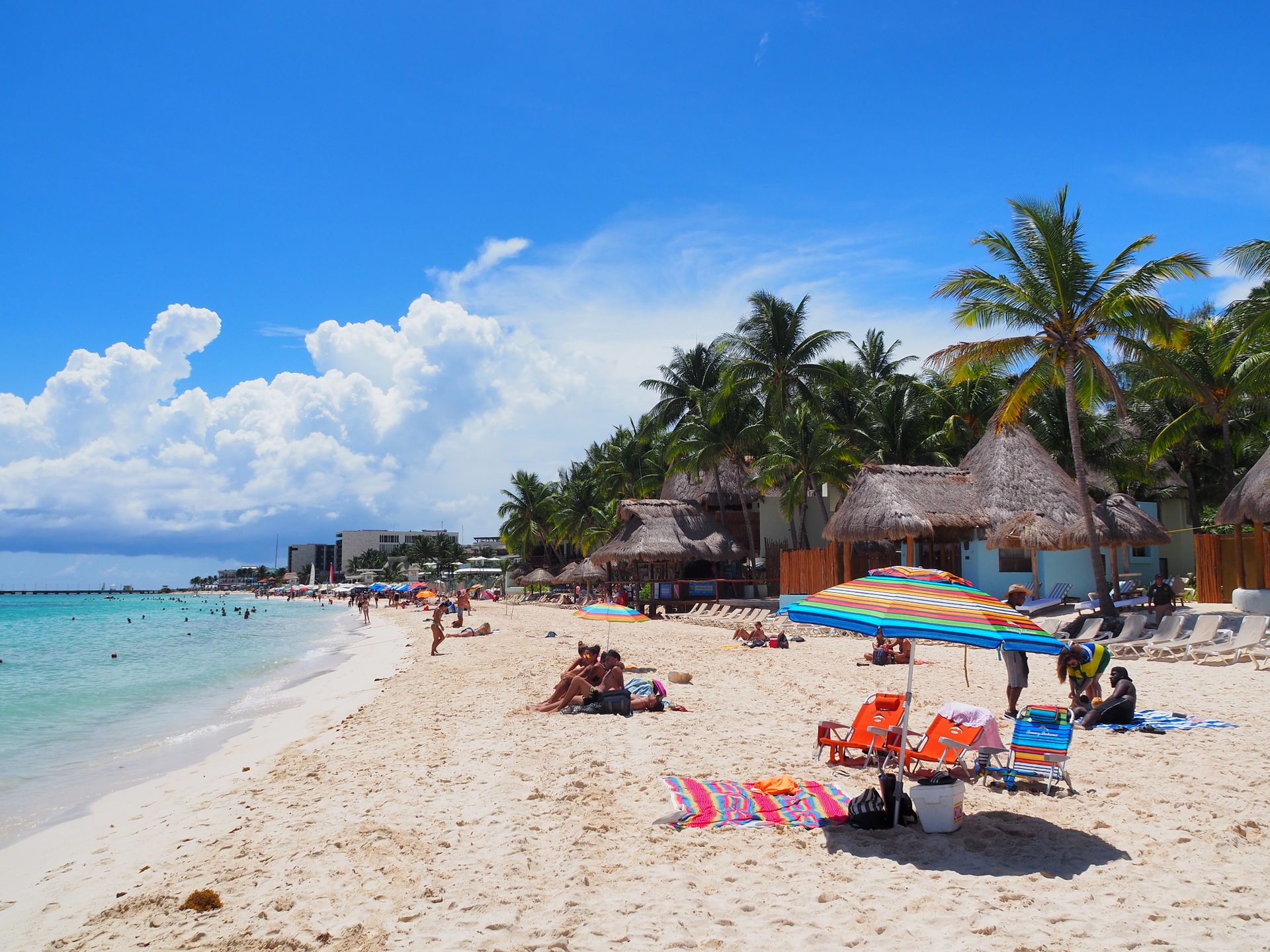
Auszeit - Reise Richtung Osten
vakantio.de/auszeit-reise-richtung-osten
Ban Houayxay, Laos: The Gibbon Experience
പ്രസിദ്ധീകരിച്ചു: 23.05.2019
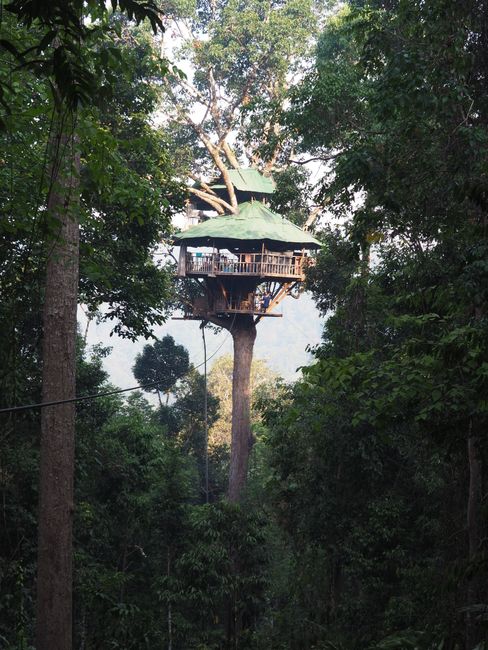
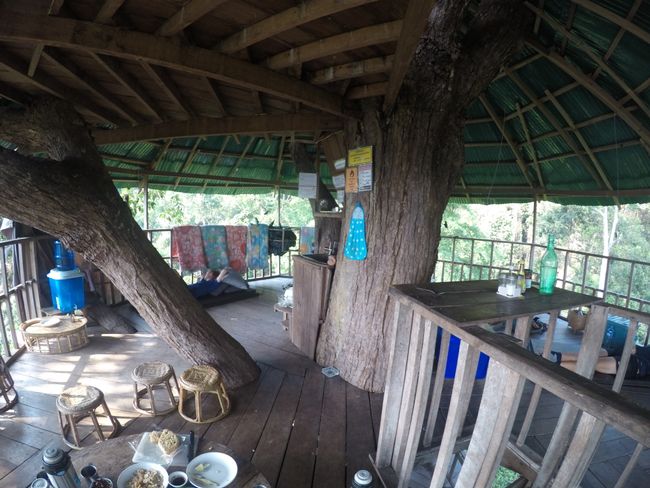
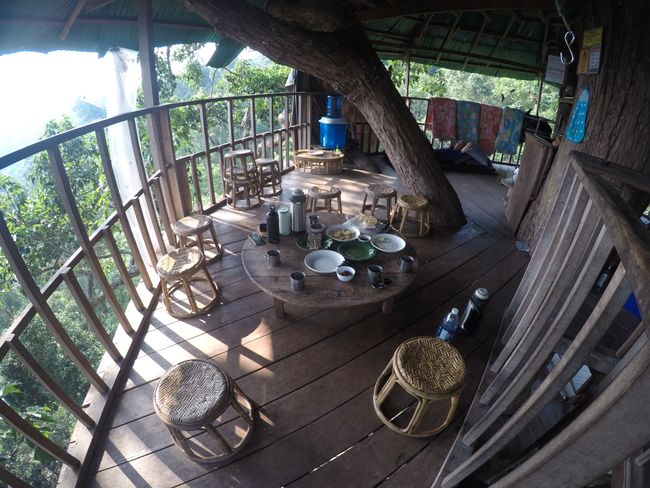
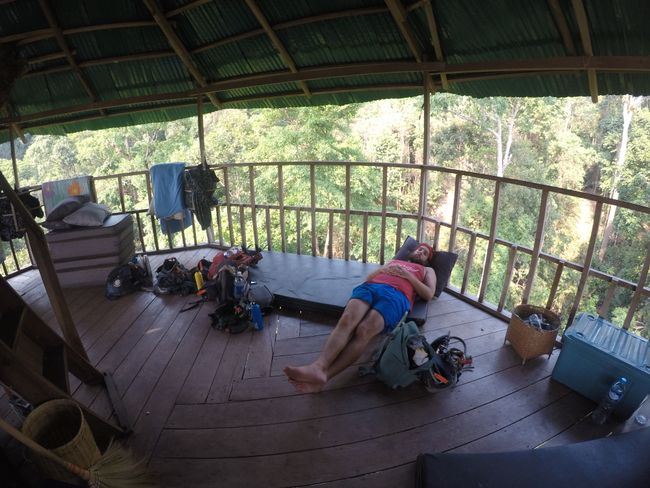
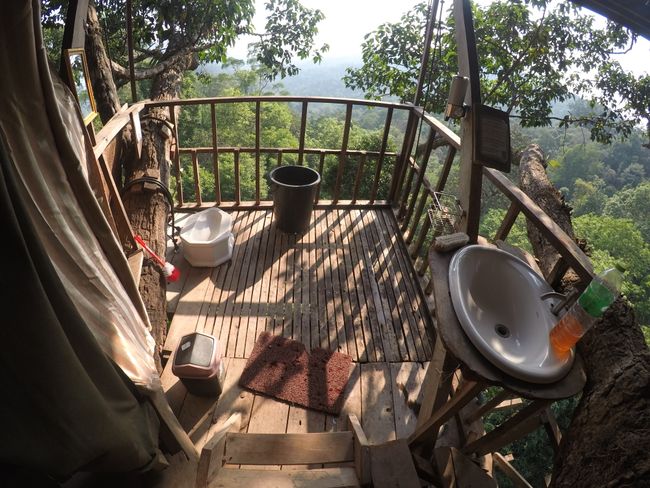
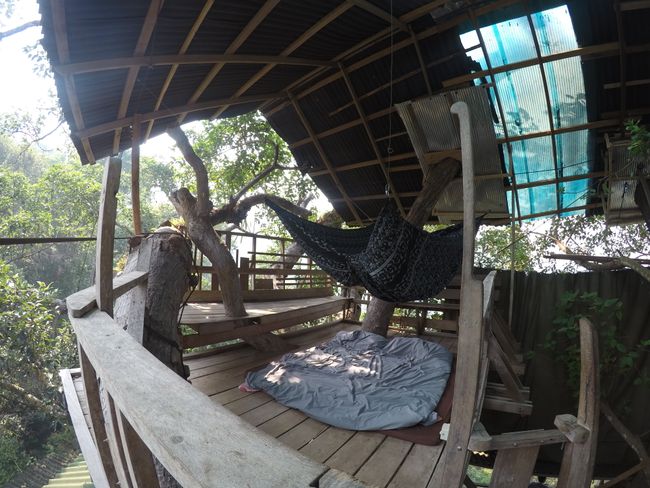
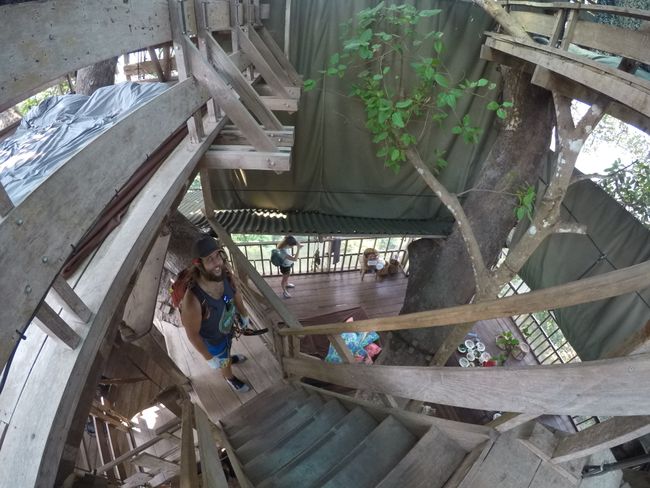
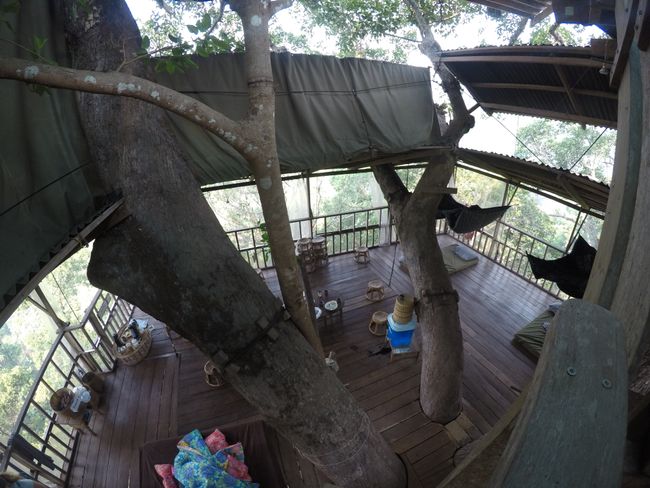
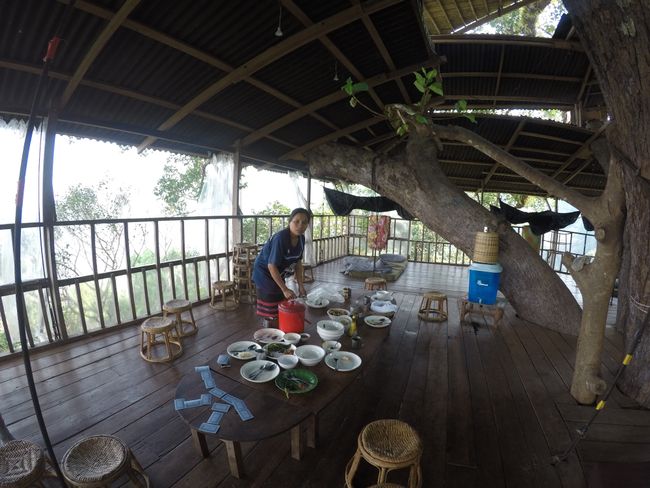
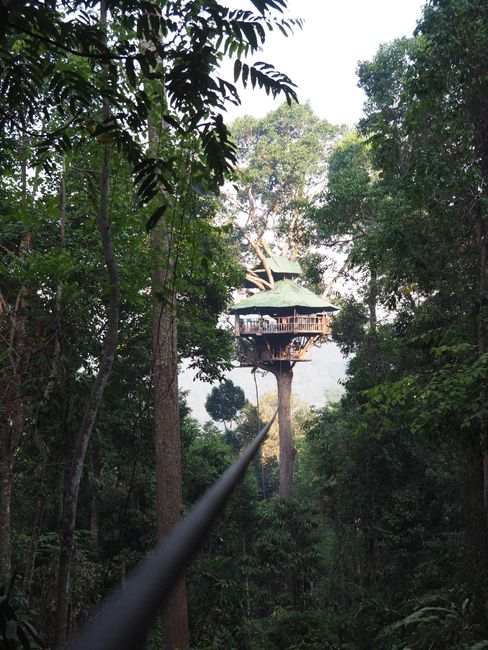
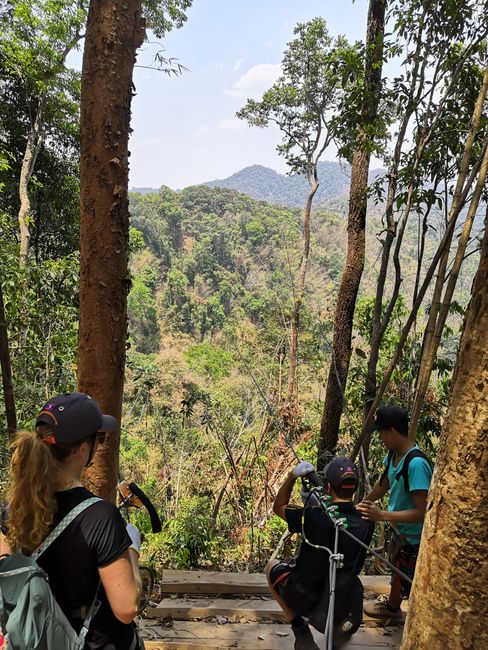
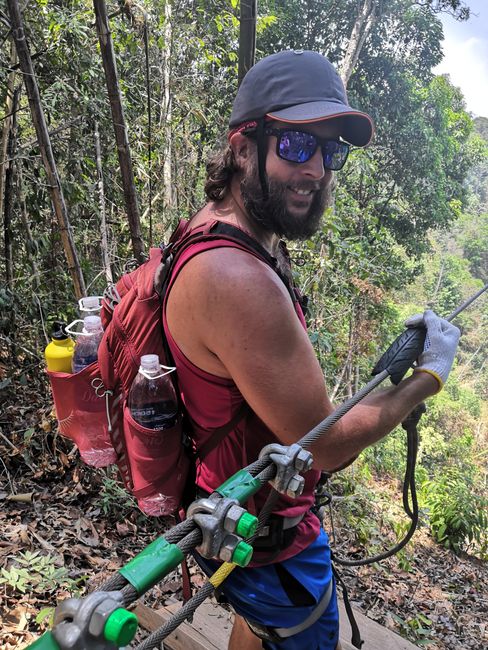
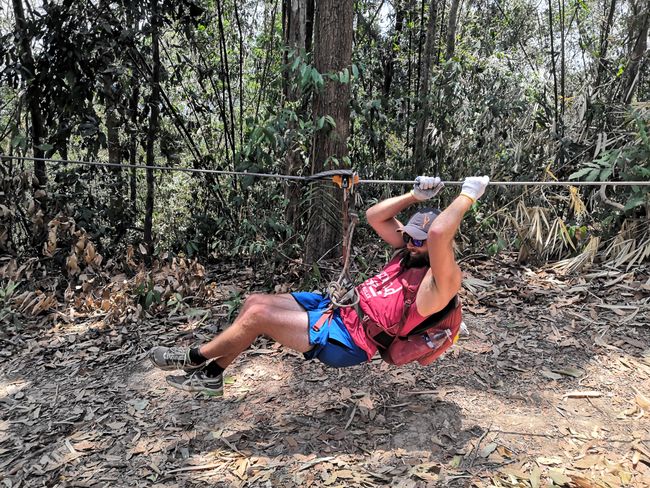
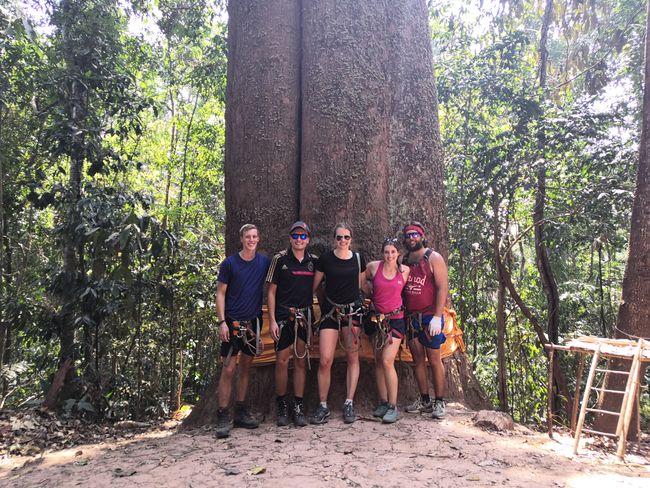
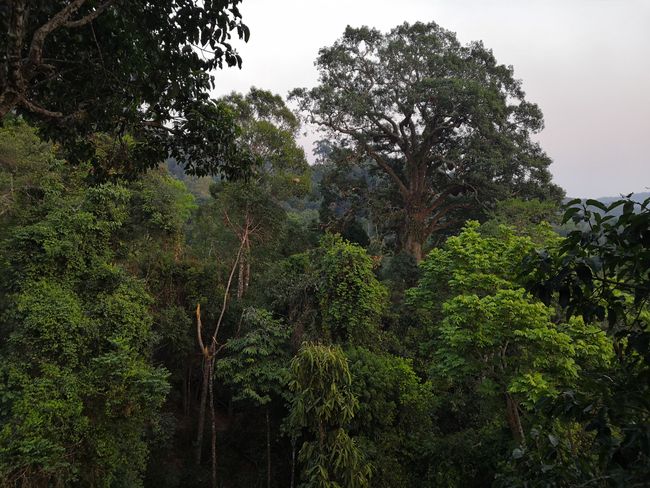
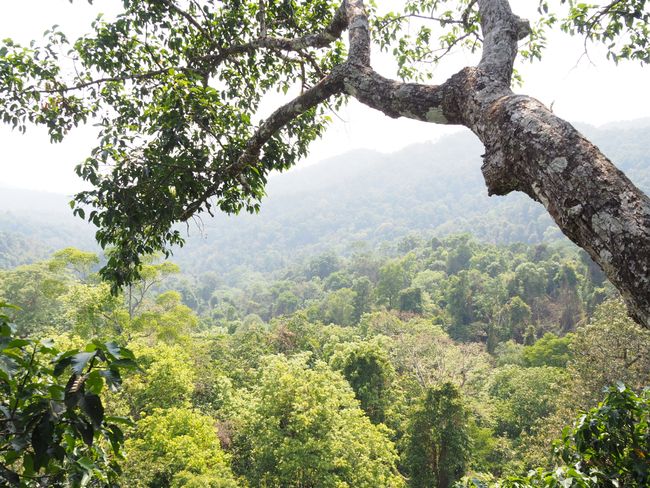
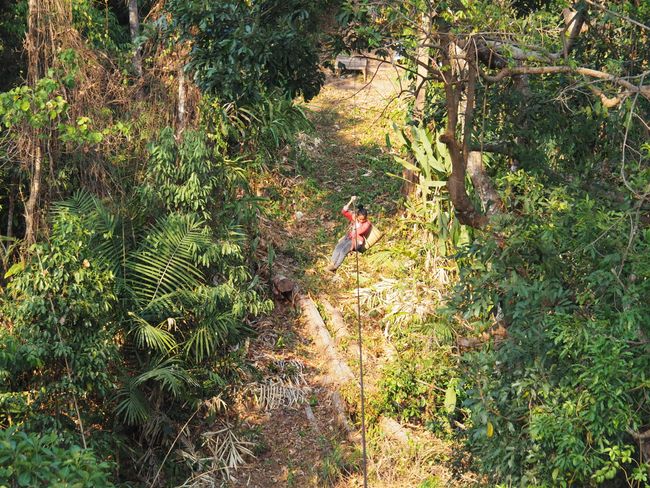
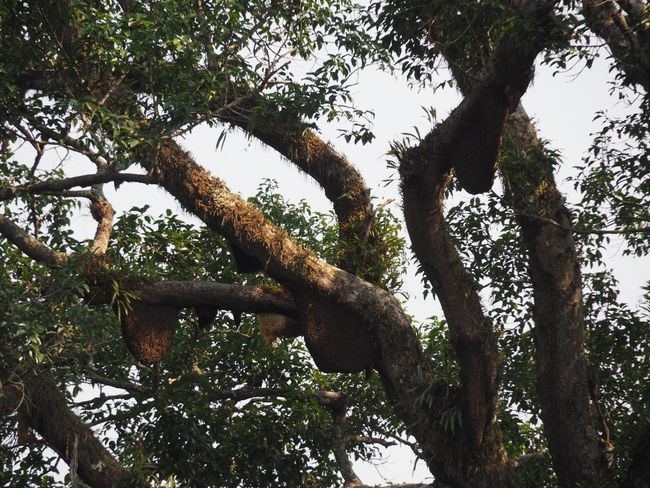
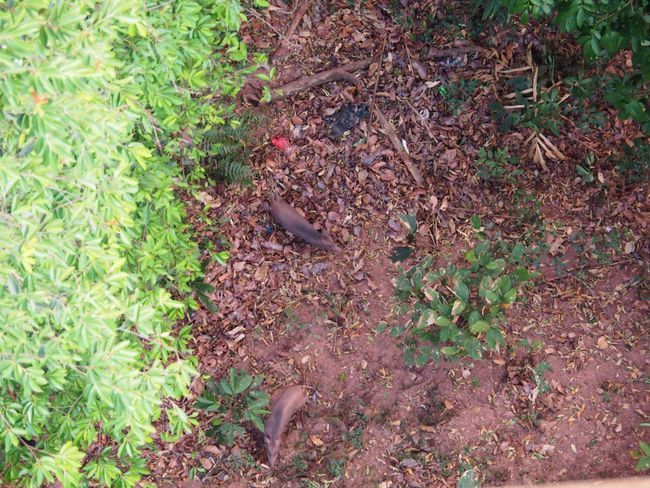
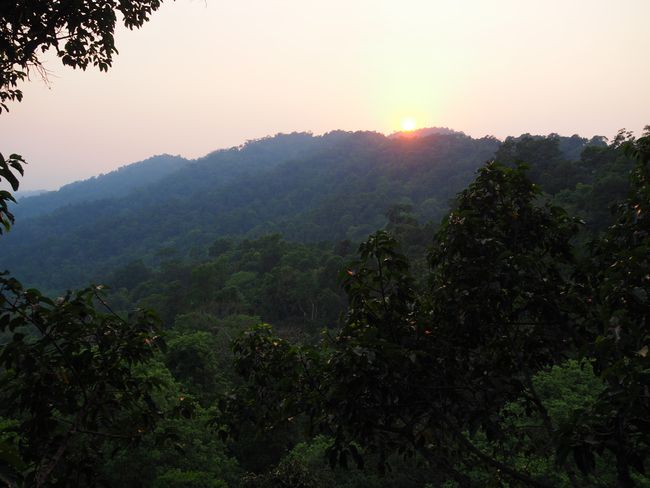
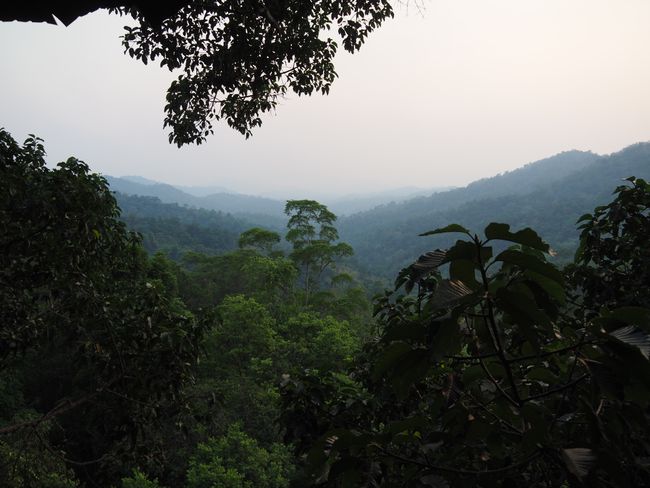
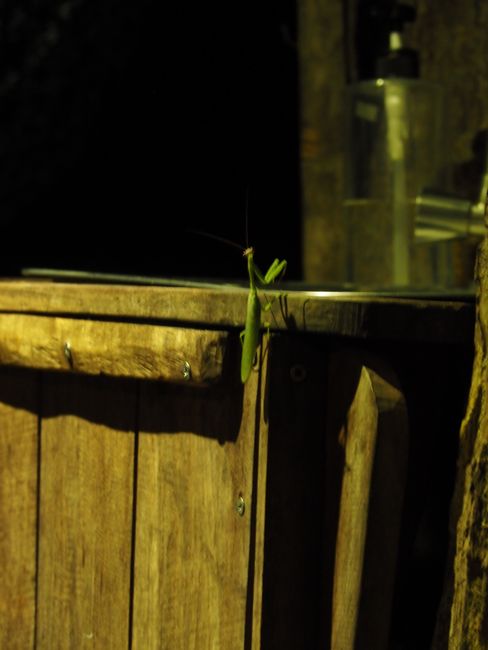
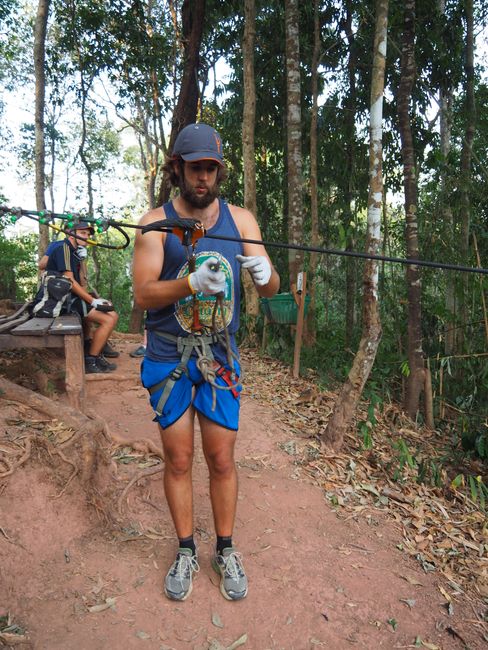
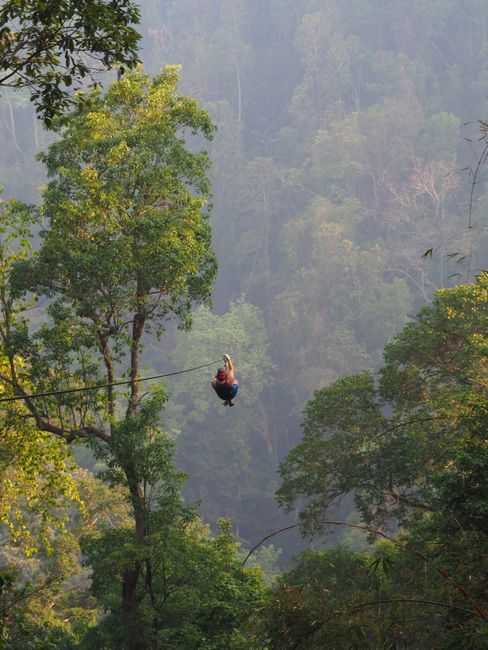
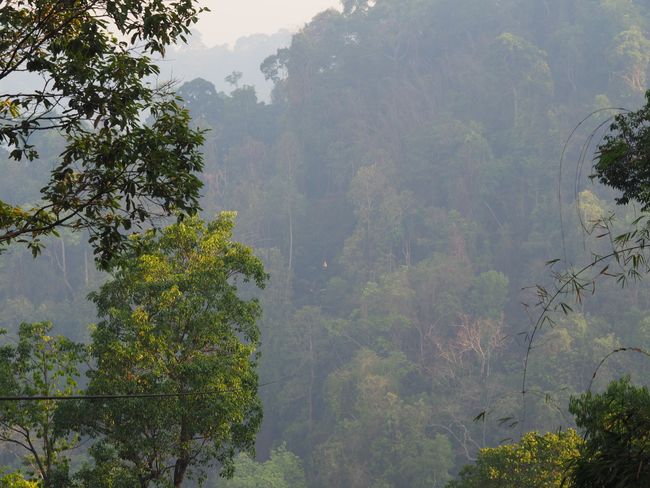
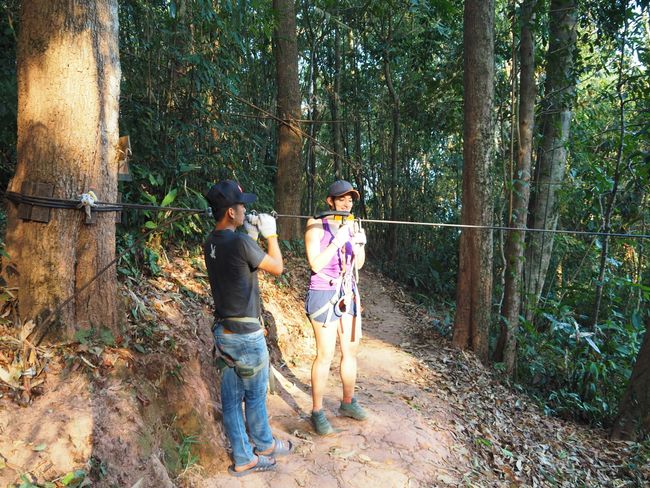
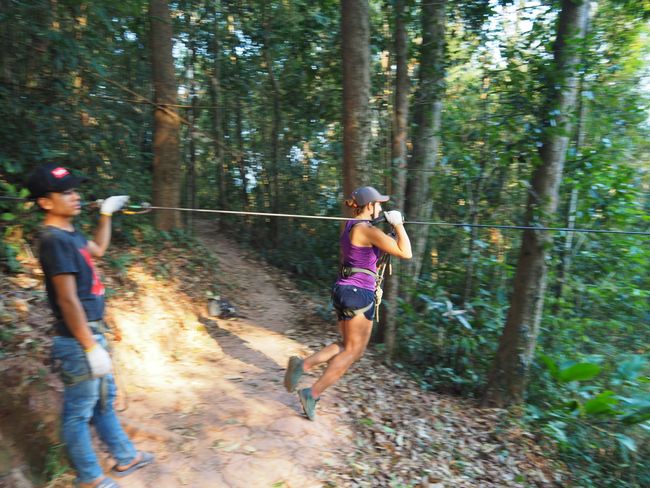
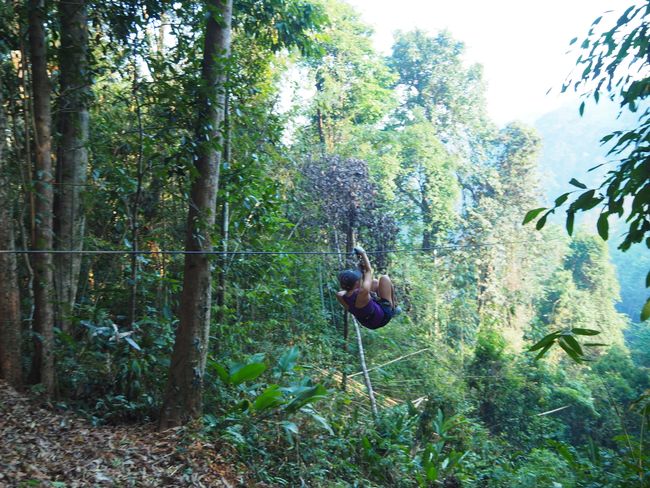
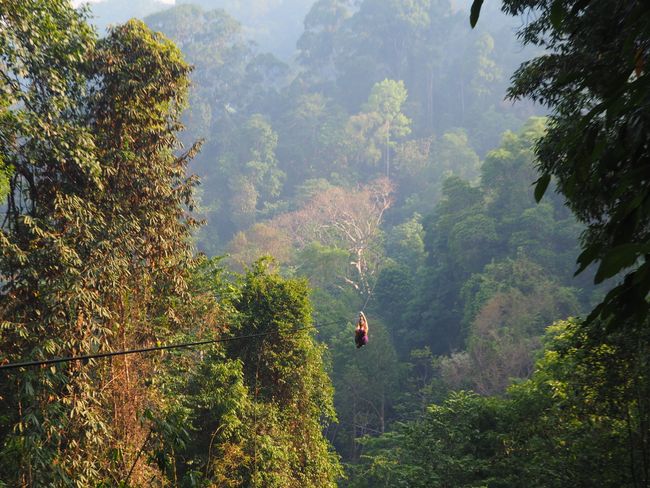
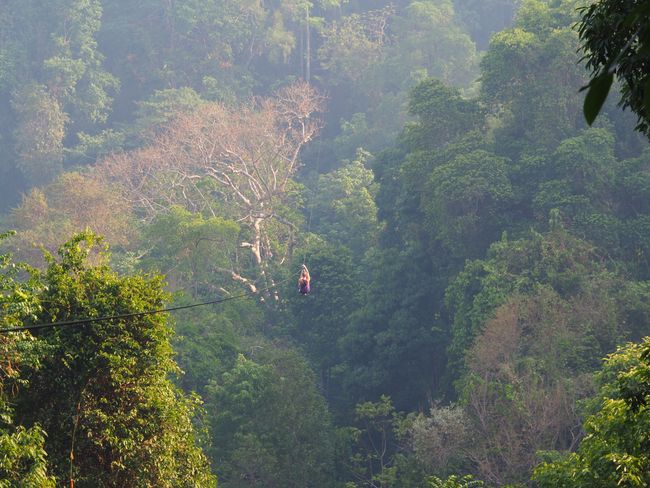
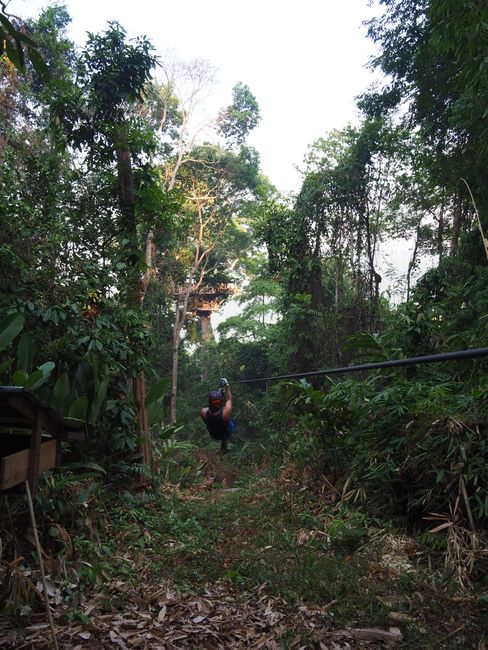
വാർത്താക്കുറിപ്പിലേക്ക് സബ്സ്ക്രൈബ് ചെയ്യുക
At 8.15 am, the approximately 18 adventurers gathered in the Gibbon Experience office. Together we watched a movie introducing the project, which was launched in 1996. The goal of the project team was to establish and protect the Nam Kam National Park in an innovative way. We cannot judge the truth of the story, but as is often the case, commercial benefit seems to have been a priority. What is certain is that the national park is home to many species of animals, including several gibbon families. These gibbons serve as the flagship for the Gibbon Experience. The movie also included important safety instructions, warnings, and useful advice. After the movie, the weather forecast was presented to us - it was supposed to reach up to 42 degrees Celsius on both days - and we received a thermos bottle. We were then loaded into pickup taxis depending on the chosen tour. Due to the hot weather, we opted for the two-day tour, which includes shorter hikes and more ziplines. After an hour's drive, we reached the starting point of the tour. Here, the group of 13 was divided into two subgroups. We joined two Dutchmen and a Swiss woman. After a Laotian snack consisting of mashed rice, bananas, and peanuts, the hike began.
After only a few meters, we reached the first zipline. This one led over a river and was about 20 meters long. It was used as a practice one, as it was only 5 meters above the ground and so slow that you stopped before reaching the end. We had to use our arms to hang on to reach the end. This was not a problem for us, as we had already done similar things in Switzerland - for example, on the via ferrata in Kandersteg or in the Gantrisch rope park.
After this first little challenge, we faced a steep climb. Our guides, Pad Thai (fake name, his real name was too complicated) and Nor, set a fast pace. The first part of the trek was by far the toughest. In nearly 40-degree heat, we climbed steeply uphill for half an hour. What would be a challenge in Switzerland turned almost into torture here. Sweat covered our shirts instantly, forming a crust of salt. Fortunately, after the first break, the slope became less steep. We completed the ascent in just over an hour. The guides then provided us with a delicious sandwich. After we finished our meal, the second group also arrived at the resting place.
After a short lunch break, we reached the second zipline after a 10-minute walk. With a maximum height of 150 meters above the ground, this is the highest zipline in the entire Gibbon Experience. Mathias filmed the first 'flight' with the Go Pro (Here is the link: https://youtu.be/InVHw7eLRDE). The view was breathtaking! Racing through the treetops at high speed at such a height was a unique experience. All the effort of the ascent vanished in an instant. After a few minutes of walking, we reached the next zipline. After about four hours and a total of nine ziplines, we reached our treehouse. It was located about 46 meters above the ground. From our accommodation, we had a good view of the largest tree in Laos. The giant beehives were particularly impressive. From a distance, they seemed uninhabited. But zooming in, we discovered thousands of bees - truly impressive.
The treehouse itself was also impressive. According to the providers, it is the tallest treehouse in the world. It is also only accessible by zipline. Except for the roof, the house is made of local materials. The living space is spread over three floors. The bottom floor has a toilet and shower. Water is pumped into water tanks by a generator during the dry season. In the rainy season, rainwater is used. Showering at this height, with a view downwards, is unique! The second floor houses the living room, dining area, and some sleeping places. There is also a small table, chairs, a sink, mosquito nets, mattresses, and pillows. The top floor accommodates a double bed. After our arrival, we were informed about the safety precautions in case of a storm while enjoying numerous snacks. The treehouse has to be evacuated about 10 times a year, usually in April and May. We were instructed to place our climbing harness, helmet, and gloves next to the bed at night. Then we had time to recover from the day until dinner.
We lay down and enjoyed the peace and quiet. Suddenly, we heard a loud rustling from the bushes. We gathered at the railing and speculated about what could be hiding in the bushes. The noise grew louder - the animal was obviously coming towards us. We guessed it might be a monkey or a bear and were very excited. Shortly after, the mystery was solved: two wild boars emerged. They diligently collected the leftovers.
Shortly after, two women zoomed in on the zipline. They set up our sleeping places. We would have liked to help, but communication was difficult. After finishing their work, they disappeared and came back after an hour with dinner. It was rich and delicious: sticky rice, pumpkin puree, minced meat, spring rolls, coconut curry, and other dishes. It was too much for five of us. The guides didn't eat with us because they only like spicy food. After dinner, Pad Thai served rice schnapps. At 10:30 pm, everyone fell exhausted into bed. We didn't sleep very well due to the heat. We also heard various animals during the night.
We started the new day at 6:15 am. Before breakfast, we went on a small zipline tour to admire the sunrise from the ziplines. Despite the cooler morning air, we immediately started sweating. But the outing was very nice. Back in the treehouse, the women served us breakfast. It was just as rich as dinner. After that, we packed our things and set off on the return journey. First, we visited the treehouse of the other group. Although it was slightly lower, it was considerably larger. However, we thought that the view from our hut was better.
With the ziplines in the morning, we used fourteen ziplines on the second day. The hike was much less challenging. Most of the time, the path was straight or downhill. In the end, we stopped at a local family's house, where we were served lunch. We could take a swim in the nearby river. A welcome cool-down. Then we returned to Ban Houayxay by pickup.
We returned to the same hotel. Our luggage was still there. We were looking forward to the air-conditioned room. Unfortunately, after just a few minutes, the power went out in the entire city, and we were roasted in our room at 40 degrees Celsius. The heat exhausted us so much that we fell asleep in the middle of the afternoon. After what felt like an eternity, the power problem was resolved, and we enjoyed the cool air. We had dinner with a couple from Germany whom we had met the night before the trek. They also did the two-day tour but were in the other group. While enjoying a good meal, we exchanged experiences and stories.
The next day, we continued to Pakbeng by slow boat.
More videos of the Gibbon Experience:
വാർത്താക്കുറിപ്പിലേക്ക് സബ്സ്ക്രൈബ് ചെയ്യുക
ഉത്തരം
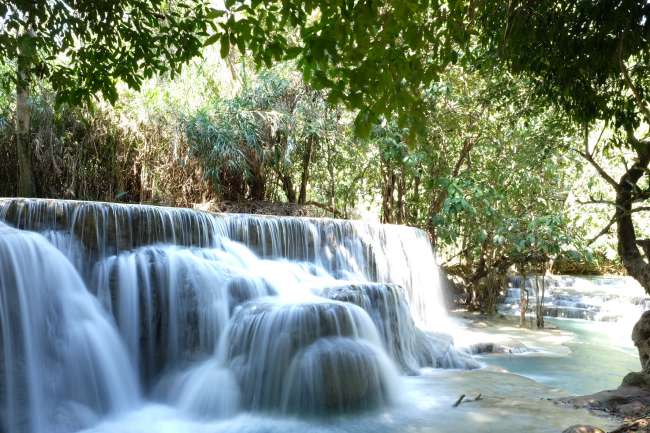
യാത്രാ റിപ്പോർട്ടുകൾ ലാവോസ്
